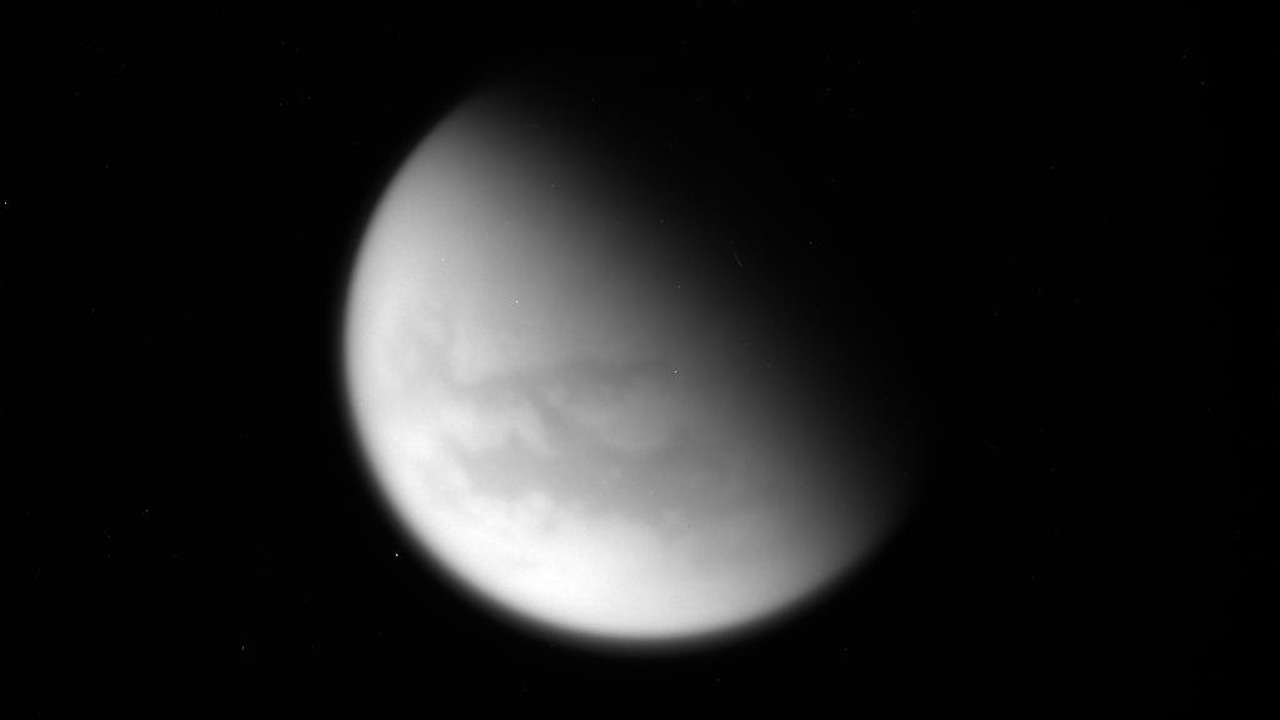
NASA’s Cassini spacecraft has now officially entered the last phase of its mission – the “Grand Finale,” with the last-ever close flyby of Titan and the first of 22 final orbits which will take the spacecraft closer to Saturn than ever before, passing between the inner rings and the planet itself. Cassini has today just completed the first of these passes (with results pending for a few hours as of this writing), which will culminate on Sept. 15 with the spacecraft plunging into Saturn’s atmosphere to meet its fiery end. It will be a sad but incredible ending to an incredible mission.
On April 21, Cassini made its final close flyby of Titan at 11:08 p.m. PDT (2:08 a.m. EDT on April 22), passing the moon at an altitude of about 608 miles (979 kilometers) above the surface. This was the last opportunity for Cassini to look at Titan’s methane/ethane lakes and seas; the final set of radar images will cover areas already seen by the imaging cameras, but not by radar. These hydrocarbon lakes and seas are found primarily near Titan’s north pole, with fewer at the south pole. The mid-latitudes near the equator are dominated by vast stretches of dark sand dunes, also composed of organic material like tholins.
“Cassini’s up-close exploration of Titan is now behind us, but the rich volume of data the spacecraft has collected will fuel scientific study for decades to come,” said Linda Spilker, the mission’s project scientist at NASA’s Jet Propulsion Laboratory in Pasadena, California.
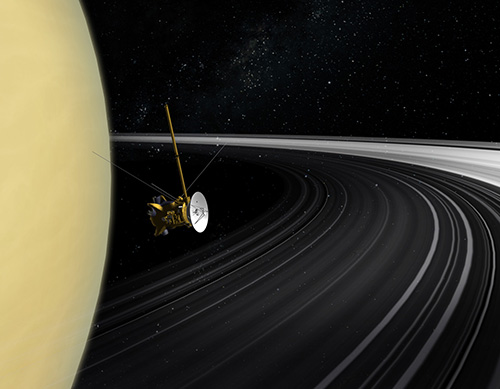
Until there is another mission, this is the last time scientists will be able to take a close look at Titan, and other Saturnian moons. What Cassini found has been nothing short of astounding – Titan is a world which mimics Earth in some ways, yet is utterly alien at the same time. The lakes and seas are part of a larger hydrological cycle like Earth’s, but with liquid methane/ethane instead of water. On the extremely cold surface, about -290 degrees Fahrenheit, water can only exist as rock-hard ice.
The Huygens probe, which separated from Cassini and landed on Titan in 2005, found rounded boulders made of ice instead of rock, sitting in an old methane streambed, which was mostly dry but still had damp soil. In other areas, the methane rivers still currently flow, emptying into the lakes and seas. It even rains liquid methane on Titan, completing the hydrological process. There is also methane fog, as Cassini discovered.
“The Huygens descent and landing represented a major breakthrough in our exploration of Titan as well as the first soft landing on an outer-planet moon. It completely changed our understanding of this haze-covered ocean world,” said Spilker.
There is also evidence for a subsurface ocean of water on Titan, but the conditions, and how favorable they may or may not be for life, are unknown as of now. The ocean is thought to be deeper underground than the ones on moons such as Europa and Enceladus, so it may be a while before we can learn much more about it. It does make Titan all that more interesting, however, with methane/ethane rivers, lakes and seas on the surface and a water ocean below.
As for the surface, some scientists think it is possible that some kind of life could exist in the lakes and oceans, although it would be quite different from anything on Earth. The extreme cold would make things difficult for any primitive life, but perhaps not impossible, if extremophiles on Earth are any indication. Could there be some form of life based on liquid methane instead of water? Only a return mission could answer that question. A study in 2015 postulated that life could indeed be possible in Titan’s environment. From the paper:
“The availability of molecules with an ability to form cell membranes does not by itself demonstrate that life is possible. However, it does direct our search for exotic metabolic and reproductive chemistries that would be similarly compatible under cryogenic conditions. As our understanding of conditions that could nurture extraterrestrial life expands, so does our probability of finding it, perhaps within the liquid methane habitable zone.”
Most recently, Cassini found evidence that unusual formations on some of the seas called “magic islands” are patches of fizzing nitrogen bubbles, which appear and then vanish again. The new paper detailing these findings is available at Nature Astronomy:
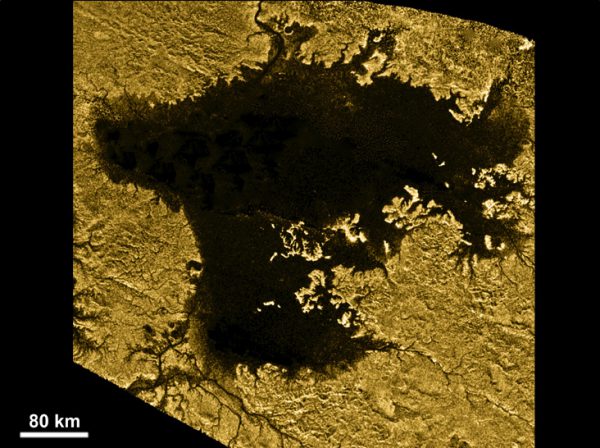
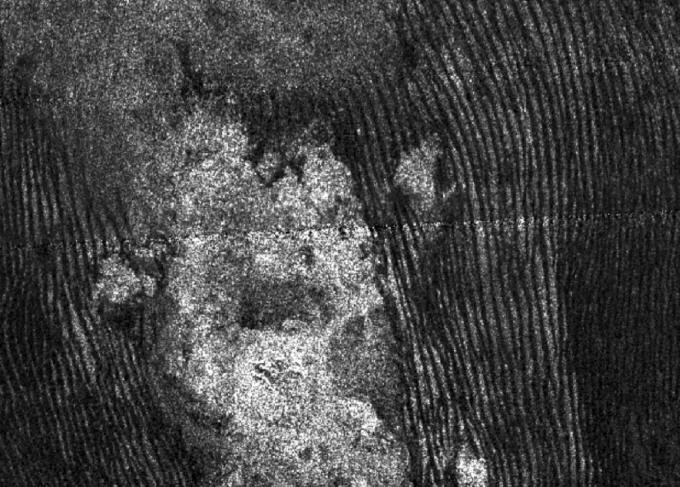
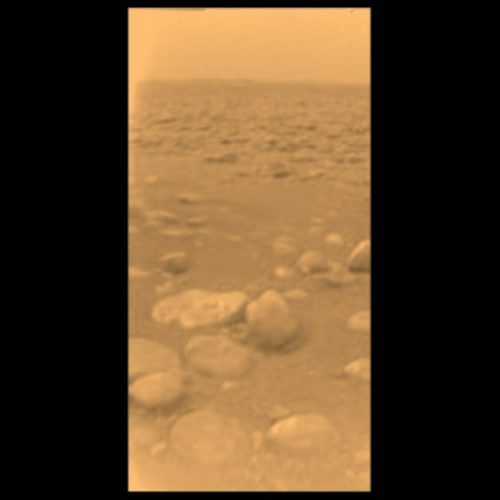
“Titan, Saturn’s largest moon, is the only extraterrestrial body known to support stable liquid on its surface, in the form of seas and lakes that dot the polar regions. Many indications suggest that the liquid should be composed of a mixture of nitrogen, methane and ethane. Recent observations by Cassini’s Radio Detection and Ranging (RADAR) instrument of Titan’s large sea, called Ligeia Mare, have shown unexplained and ephemeral bright features, possibly due to rising bubbles. Here we report that our numerical model, when combined with experimental data found in the literature, shows that Ligeia Mare’s bed is a favour able place for nitrogen exsolution. This process could produce centimetre-sized and RADAR-detectable bubbles.”
And now, after a mission beginning in 2004, Cassini is nearing the end. Prior to the Grand Finale, Cassini finished the Ring-Grazing Orbits phase which began last Nov. 30, and consisted of 20 orbits, with the spacecraft passing very close to the outer edge of Saturn’s rings. Now, in the Grand Finale, Cassini will repeatedly orbit much closer to the planet itself, passing between the innermost rings and Saturn’s atmosphere. It is a feat which has never been done before by any space probe. Assuming these orbits are successful, the last orbit on Sept. 15 will take the spacecraft straight into Saturn’s atmosphere, where it will be incinerated as it plunges deeper. This was planned on purpose, as a way to avoid possibly contaminating any of the moons with stowaway microbes should a collision occur. As it nears the final moments of its life, Cassini will continue to take images and other data. The views from between the rings and the planet itself should be spectacular. Other recent images have shown the structure of the rings in detail never seen before – they are nothing short of breathtaking. Yet other images also show amazing complexity in the atmosphere of Saturn, including the famous “hexagon” jet stream around the north pole, with a massive, bluish vortex inside it.
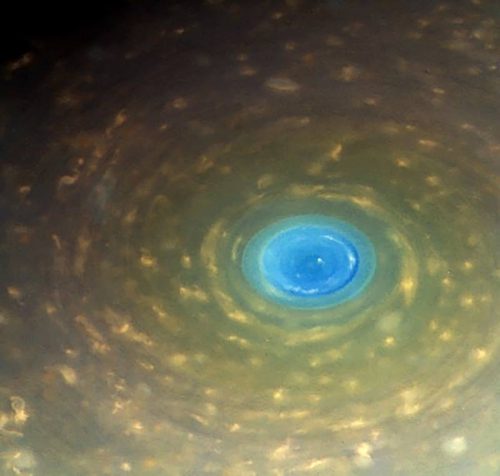
Cassini also recently sent back intriguing images of the tiny moons Pan and Atlas, which look like “raviolis” or “flying saucers.”
Cassini has now just completed the first of the Grand Finale orbits. The spacecraft is currently out of contact with Earth, as planned, and the results will not be known until about midnight PDT on April 26, 2017 (3 a.m. EDT on April 27, 2017). The planned milestones include:
- 5 p.m. PDT (8 p.m. EDT) on April 25: Cassini is approaching Saturn over the planet’s northern hemisphere in advance of its first of 22 planned dives through the gap between the planet and its rings.
- 1:34 a.m. PDT (4:34 a.m. EDT) on April 26: As it passes from north to south over Saturn, Cassini begins a 14-minute turn to point its high-gain antenna into the direction of oncoming ring particles. In this orientation, the antenna acts as a protective shield for Cassini’s instruments and engineering systems.
- 2 a.m. PDT (5 a.m. EDT) on April 26: Cassini crosses the ring plane during its dive between the rings and Saturn. The spacecraft’s science instruments are collecting data, but Cassini is not in contact with Earth at this time.
- No earlier than around midnight PDT on April 26 (3 a.m. EDT on April 27): Earth has its first opportunity to regain contact with Cassini as the giant, 230-foot (70-meter) Deep Space Network antenna at Goldstone, California, listens for the spacecraft’s radio signal.
- Likely no earlier than 12:30 a.m. PDT (3:30 a.m. EDT) on April 27: Images are scheduled to become available from the spacecraft.
The last flyby of Titan also uses the moon’s gravity to help put the spacecraft in the right orbits for the Grand Finale. After the encounter, Cassini speeded up with an increase in velocity of 1,925 mph (precisely 860.5 meters per second) with respect to Saturn.
“With this flyby we’re committed to the Grand Finale,” said Earl Maize, Cassini project manager at JPL. “The spacecraft is now on a ballistic path, so that even if we were to forgo future small course adjustments using thrusters, we would still enter Saturn’s atmosphere on Sept. 15 no matter what.”
Cassini then reached the farthest point in its orbital path around Saturn at 8:46 p.m. PDT (11:46 p.m. EDT) on April 22. It is at this point, called the apoapse, where each new Cassini orbit around Saturn begins. This is the technical beginning of the Grand Finale phase, but the formal beginning is recognized as April 26, after the first dive between Saturn and the rings.
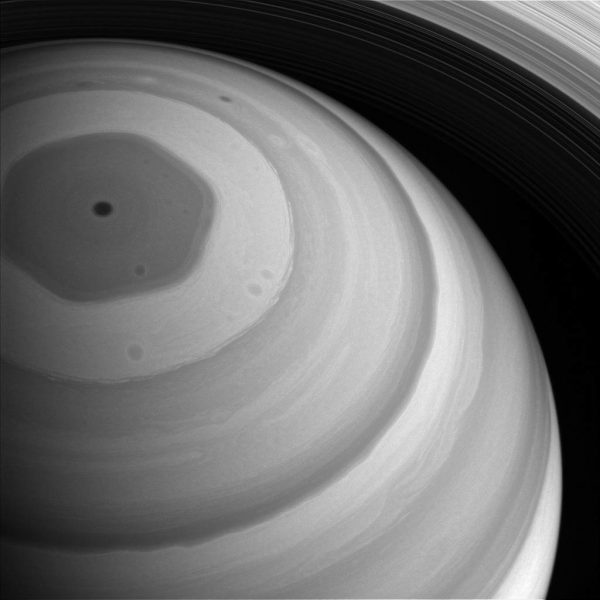
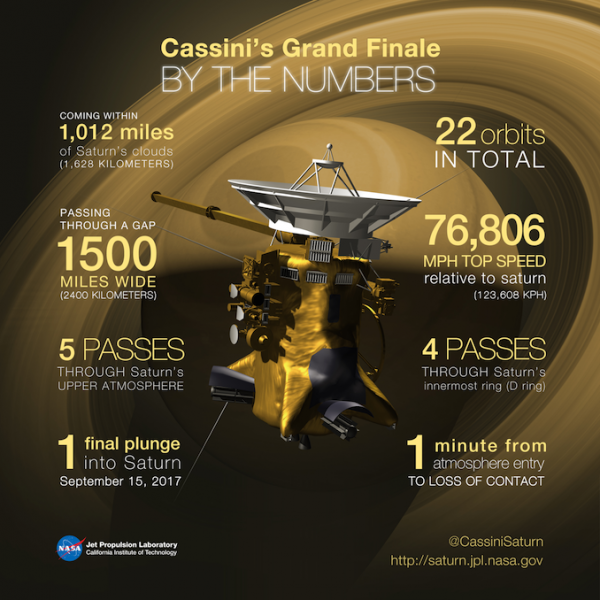
While Cassini is diving through the gap between Saturn and the rings, it will use its dish-shaped high-gain antenna (13 feet or 4 meters across) as a protective shield while passing through the ring plane. The Radio and Plasma Wave Subsystem (RPWS) will also be used to determine the size and density of ring particles in the gap in advance of future dives. Engineers are confident that Cassini will pass through the gap in good condition, since most ring particles expected to be encountered are no larger than smoke particles.
This first dive through the gap between Saturn and its rings marks the beginning of the end. After 19 more orbits, Cassini will meet its fate, but not before providing even more, and better, data and images about Saturn and its rings. It will be the end of an era, but will also pave the way for even more ambitious future missions.
More information about the Grand Finale phase of the mission is here. All of Cassini’s raw images can be seen here on the mission website, and more information about the Cassini mission itself is available here.
Be sure to “LIKE” AmericaSpace on Facebook and follow us on Instagram & Twitter!




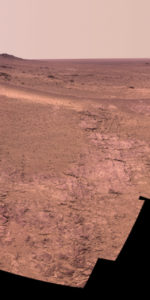
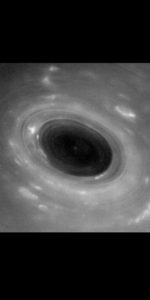
If there were an “Interplanetary Robotic Hall of Fame,” Cassini would get my vote as #1.
Instead of the little engine that could Cassini is the little spacecraft that did.